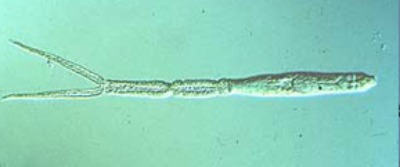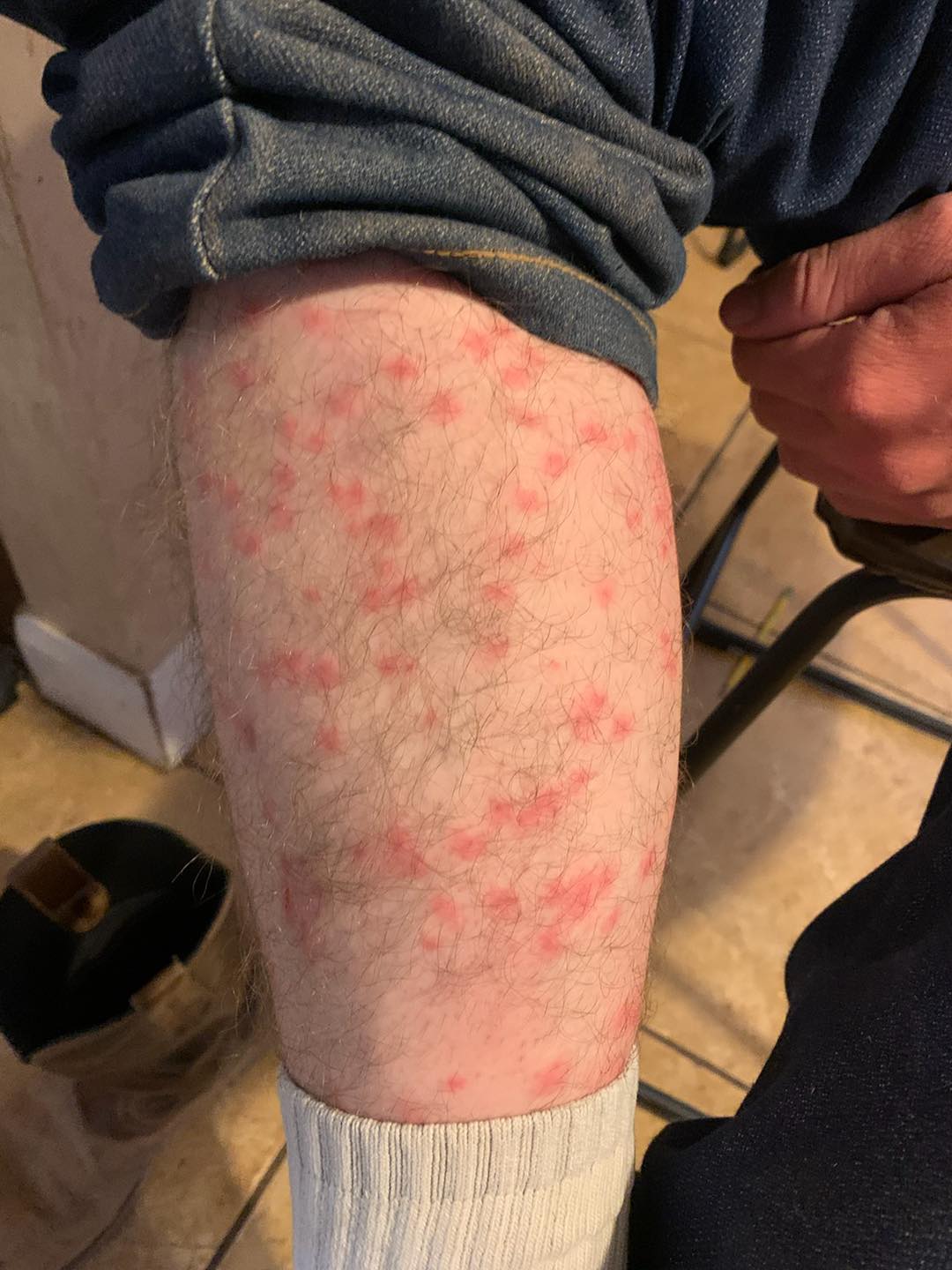ST. GEORGE — The parasite responsible for swimmer’s itch has made its annual migration to Sand Hollow State Park, leaving visitors with the nasty rash as the microscopic visitors burrow under the skin of their unsuspecting hosts. However, steps can be taken before and after swimming that can be effective at halting the invasion before it begins.

Sand Hollow State Park spokesperson Jonathan Hunt told St. George News that the park has started to see reports of swimmer’s itch from park visitors over the last week.
Swimmer’s itch is described as a skin rash caused by an allergic reaction to microscopic parasites carried by waterfowl, semi-aquatic mammals and snails.
The parasite is commonly found in shallow water and is more common during the summer months.
The timing for the spike in the number of cases makes sense, Hunt said, since the parasite thrives once the temperature of the water reaches 65 degrees – which just so happens to take place right around Memorial Day weekend.
The larvae responsible for the skin condition remain in the water for several weeks, from the end of May through June, he said, and then beginning in the first part of July those numbers begin to drop as the summer progresses.

While swimmer’s itch can be difficult to manage it would be impossible to eradicate the parasite from Sand Hollow, Hunt said.
“We could drain Sand Hollow and start over by filling it back up – only to have the parasite return.”
He also said that swimmer’s itch is more pronounced at Sand Hollow than what has been found at Quail Creek or other reservoirs in Southern Utah, but the cause or reason for that phenomena has yet to be determined.
Educating the visiting public is the focus at Sand Hollow State Park, Hunt said, and to that aim the park has posted a great deal of information regarding swimmer’s itch on their Facebook page, including steps park visitors can take to alleviate the symptoms once the parasites have burrowed into the skin.

However, taking preventative steps before entering the water can reduce the risk of the tiny invaders entering at all, he said, and knowing where the parasites proliferate can also help, since there are specific areas that are more prone to becoming infected than others.
Shallow areas of the reservoir contain the highest concentration of parasites, particularly the southern shore of the reservoir, while the diving rocks and deeper waters do not provide a favorable environment for the tiny hitchhikers.
Small children playing in shallow water are most susceptible, as they cycle between being wet and dry throughout the day, which increases the risk of being infected as the larvae tend to burrow once the swimmer leaves the water.
Visitors can apply a waterproof sunscreen before entering the water, which can create a protective barrier and make it more difficult for the parasite to burrow under the skin.
Taking a shower and rinsing off immediately after leaving the water can remove any parasites before they enter the skin, and drying off with a towel can also remove the unwanted hitchhikers. To that end, Hunt said there are several showers that are now provided free of charge to park visitors.
He went on to say there are topical creams that can also be effective in reducing the risk of becoming a host – including one that is available at Hurricane Family Pharmacy.
JR Bell, a pharmacist at Hurricane Family Pharmacy, said the ointment Swimmer’s Itch Guard contains eucalyptus oil as one if its main ingredients – an odor that repels the larvae.

“For some reason the parasite doesn’t like eucalyptus oil at all,” Bell said, adding the cream will need to be applied every hour or so for it to remain effective.
Bell also reiterated the effectiveness of applying sunscreen before entering the water.
Steve Kirkland, owner of Sienna’s Pharmacy in St. George, said another ointment that has been found to be effective is Desitin ointment or any similar product that contains a high level of zinc oxide, which also creates a barrier that can prevent the parasites from coming into contact with the swimmer’s skin.
The ointment is thick and covers the pores of the skin, he said, which can make it very difficult for the parasite to enter. He said it is a thick white cream, but if it is rubbed in thoroughly, it is less noticeable. The ointment remains effective for an extended period of time, up to several hours depending on how much is applied, and it works well for smaller children who spend more time in shallow water.
Kirkland also reiterated the effectiveness of showering immediately after leaving the water, which will rid the body of the parasites, followed by a brisk towel drying to remove any remaining parasites.
Kirkland said for those infected, taking an antihistamine or allergy medication can help with the symptoms by reducing the body’s immune response, and a nondrowsy formula can even be taken beforehand, which can mitigate the symptoms before they begin.
Birds, blood and the adult flatworm
Cercaria, the parasite that causes swimmer’s itch, has a three-stage lifecycle that starts with the adult flatworm that lives in the blood of infected birds, according to the Centers for Disease Control.

The female flatworm eggs are released through the birds’ feces.
Once in the water, the eggs hatch and swim to the surface to optimally find a snail. If successful, the larvae enter the snail and continue to develop, producing thousands of new parasites that are then released into the water where they begin the search for a bird again, completing the cycle.
It is when these larvae find a swimmer first that they cause problems in the human population by burrowing into the skin of the swimmer and then die off, since humans do not make an appropriate host. It is the allergic reaction to the foreign invader that causes the “itch,” a rash that appears as red, bite-like welts within several hours of leaving the water.
On a positive note, a majority of those who are affected build an antibody after one reaction and do not experience symptoms again.
David Heaton, Southwest Utah Public Health spokesperson, previously told St. George News that the level of discomfort varies with the person’s sensitivity and the extent of infestation. He added that while swimmer’s itch is neither dangerous nor contagious, it can be painful and very uncomfortable.
Utah is not alone in the battle against swimmer’s itch. Thirty states across the country have reported cases of the parasite, along with Canada and Europe, the CDC says.
Copyright St. George News, SaintGeorgeUtah.com LLC, 2021, all rights reserved.